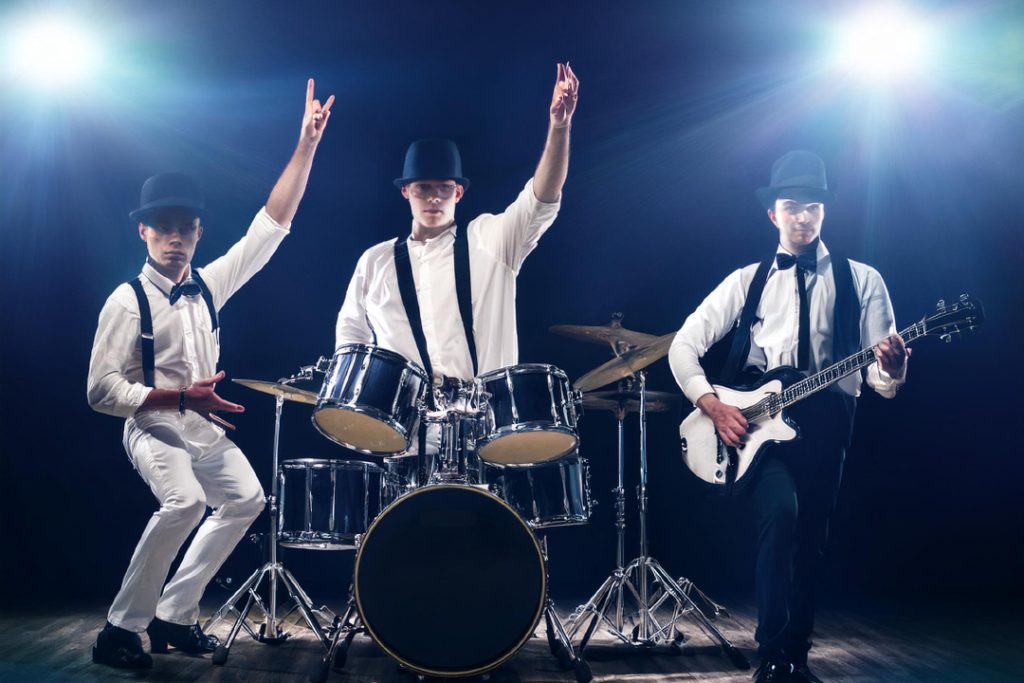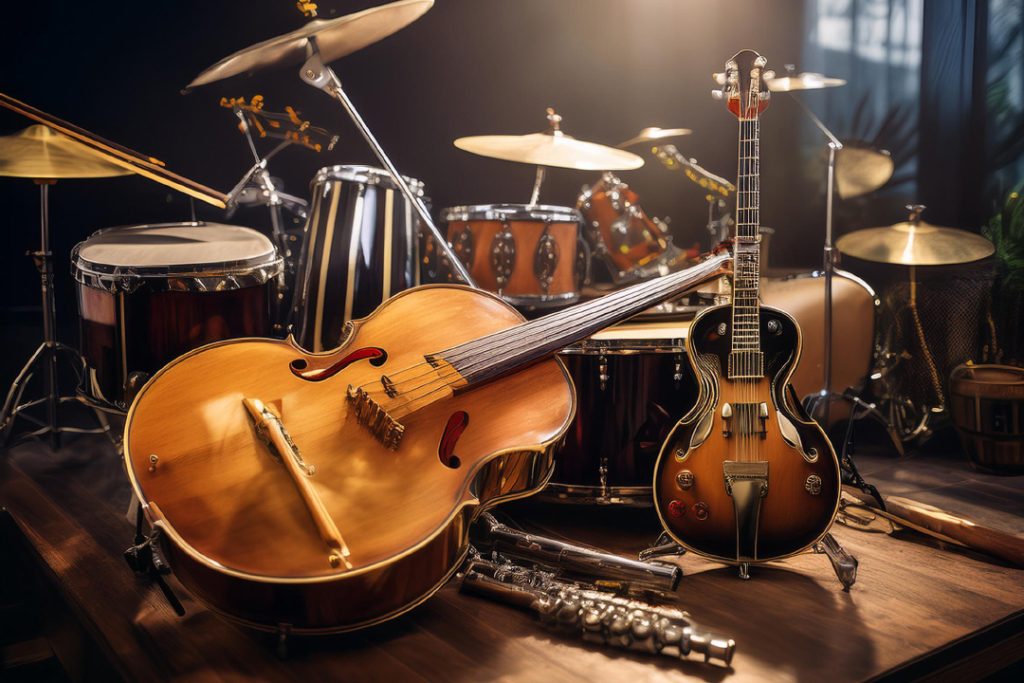My Musical Journey
Introduction: Exploring a World of Music
Ever since I can remember, music has been a constant in my life. The melodies, beats, and harmonies have always captured my heart, pushing me to dive into different music genres with gusto. Each genre has its own flavor and backstory, making every discovery an adventure.
A Love for Different Musical Styles
My love for discovering different musical styles comes from a need to understand and appreciate the endless variety of sounds out there. From the electrifying vibes of rock and roll to the smooth grooves of jazz, each genre offers a chance to experience new cultures and emotions. It’s more than just hearing the music; it’s about feeling it.
To keep track of my musical adventures, I’ve put together a personal table of my favorite genres along with my top tracks for each.
| Genre | Top Track |
|---|---|
| Jazz | “Take Five” by Dave Brubeck |
| Blues | “The Thrill Is Gone” by B.B. King |
| Rock | “Bohemian Rhapsody” by Queen |
| Pop | “Thriller” by Michael Jackson |
| Electronic | “Strobe” by Deadmau5 |
| Classical | “Moonlight Sonata” by Ludwig van Beethoven |
| Opera | “Nessun Dorma” by Giacomo Puccini |
| World | “Waka Waka (This Time for Africa)” by Shakira |
| Folk | “Blowin’ in the Wind” by Bob Dylan |
Being a music student, exploring these genres is more than just homework—it’s a journey of personal growth. Each genre teaches me something new about musical technique, cultural influence, or emotional depth. So come along as I groove to the soulful sounds of jazz, rock out to beat-heavy anthems, and much more. The road to musical mastery is full of exciting twists, and I’d love for you to join me.
Jazz and Blues
Jazz: Music That Hits You Right in the Soul

Remember the first time you heard jazz? It felt like the universe suddenly had a new frequency. Jazz, with its roots in early 20th-century New Orleans, isn’t just music; it’s an experience. Its intricate rhythms and spontaneous melodies are like a musical rollercoaster—unpredictable and exhilarating.
What makes jazz so special is its improvisation. Musicians create their magic on the spot, making each performance one-of-a-kind. Picture a typical jazz band: the trumpet taking the lead with its bright, bold notes, the saxophone adding a harmonic layer, the piano weaving chords and melodies, the bass laying down the rhythmic foundation, and the drums tying it all together with complex beats.
Here’s a peek at the instruments you’ll find in a jazz band:
| Instrument | What’s It Do? |
|---|---|
| Trumpet | Leads with Melodies and Improvisation |
| Saxophone | Provides Harmony and Rhythm |
| Piano | Adds Chords and Melodies |
| Bass | Keeps the Rhythm Solid |
| Drums | Keeps Time and Adds Rhythmic Flair |
Jazz isn’t just a blend of sounds; it’s a blend of cultures and influences—blues, classical, African rhythms—you name it. For any music lover, diving into jazz is like opening a box of musical treasures. Every note can take you back in time, making you feel the energy and passion of a different era.
Blues: The Heartbeat of Music
Blues music gets me every time. Born from the African American communities in the Deep South during the late 19th century, blues is the soundtrack of raw emotion. Its melancholic lyrics and soulful melodies speak of sorrow and hardship, but also of joy and resilience.
Blues music isn’t complicated, but it’s powerful. A simple guitar riff, a harmonica wail, and a heartfelt voice—that’s all you need to create something unforgettable. The traditional 12-bar blues structure and those unique “blue notes,” slightly bent in pitch, give blues its unmistakable sound.
Here’s what makes up a blues song:
| Element | What It Means |
|---|---|
| 12-Bar Structure | Classic 12-Meter Chord Pattern |
| Blue Notes | Slightly Off-Pitch Notes for Effect |
| Call and Response | Musical Dialogue Between Voice and Instrument |
| Emotional Vocals | Deep, Impactful Lyrics |
Listening to blues feels like tapping into the core of human emotion. It’s no wonder so many other genres owe their soul to the blues. By exploring it, you not only get a lesson in music history but also a deeper appreciation for the creativity and resilience of its artists.
If you’re intrigued and want to expand your musical horizons, check out these recommendations on music streaming services and music production software.
Rock and Roll
The Energetic Pulse of Rock Music
Ever felt the unstoppable surge of energy when a rock song kicks in? Yeah, me too. The electrifying guitar riffs, thundering drums, and the unapologetically loud vibes of rock music ignite a fire that’s hard to put out. This genre has been my adrenaline shot, always lifting my spirits and filling my world with rebellious sounds.
Rock music thrives on the synergy of electric guitars, bass, and drums. These instruments don’t just play; they come alive. The electric guitar often steals the show with its electrifying solos and unforgettable riffs. Meanwhile, the bass and drums keep the heartbeat going, giving rock its unstoppable drive.
Rock’s magic lies in its incredible variety. From the raw power of classic rock to the energetic blitz of punk, and even the soulful rock ballads, there’s a flavor for every moment and mood.
| Subgenre | Key Characteristics |
|---|---|
| Classic Rock | Powerful vocals, killer guitar solos |
| Punk Rock | Fast beats, straightforward melodies |
| Hard Rock | Heavy sound, intense riffs |
| Alternative Rock | Creative, and sometimes weird, but always cool |
The Rollercoaster Ride of Rock and Roll
You can’t truly appreciate rock and roll without knowing where it came from. This genre burst onto the scene in the U.S. in the late 1940s and ’50s, born from an exciting mix of jazz, blues, country, and gospel. It’s a journey that mirrors the cultural shifts and rebellious spirits of the times.
Rock and roll didn’t just shuffle along with history; it screamed through it, becoming a soundtrack for social revolutions and youth movements. The 1950s and ’60s saw rock becoming the battle cry for a generation craving change and freedom.
| Decade | Major Developments |
|---|---|
| 1950s | Rock and roll is born, mixing blues and country |
| 1960s | British Invasion and psychedelic rock take the stage |
| 1970s | Hard rock and punk rock shake things up, rock hits mainstream |
| 1980s | Glam metal glitters, alternative rock breaks ground |
| 1990s | Grunge rules, rock blends with other genres |
Curious about how these genres blend and influence each other? Check out our take on World and Folk Music.
Even now, rock and roll keeps evolving, fusing new influences and trends. It remains a seismic force in music, inspiring wave after wave of fans and musicians alike.
Want more musical insights? Dive into our sections on music trivia questions and music production software.
Pop and Electronic
Let’s talk music – a universal language with endless beats and melodies. Among the many genres, pop and electronic hold their own special magic. Each brings a different vibe, making our playlists diverse and exciting.
Catchy Melodies of Pop Music
Who doesn’t love a good pop song? You’re going about your day and then bam! A catchy tune gets stuck in your head. That’s the charm of pop music – it’s designed to grab your attention and make you tap your feet. Mixing elements from various genres, pop always finds a way to sound fresh yet familiar. Remember the first time you heard a song by Britney Spears or Justin Timberlake? Instant classic.
Pop music has an interesting habit of evolving over time, morphing yet always staying relevant. From The Beatles in the ’60s to Beyoncé today, pop’s transformation is fascinating. Check out this quick overview:
| Decade | Notable Pop Artists | Chart-topping Hits |
|---|---|---|
| 1960s | The Beatles, Elvis Presley | “Hey Jude”, “Can’t Help Falling in Love” |
| 1980s | Michael Jackson, Madonna | “Thriller”, “Like a Prayer” |
| 2000s | Britney Spears, Justin Timberlake | “Oops!… I Did It Again”, “Cry Me a River” |
Want more? Tune into music streaming services and dive into endless hits and hidden gems.
The Experimental World of Electronic Music
If pop is all about catchy hooks, electronic music is the playground of innovation. Using tech to create new sounds, electronic music pushes the boundaries of our auditory experience. Genres like house, techno, dubstep, and ambient each take you on a different sonic journey.
One of my favorite parts? Live performances. Imagine thumping beats paired with stunning visuals – a full sensory takeover. If you’re keen to experience this, check out music festivals near me.
Creating electronic music is an art in itself. Artists use various music production software to layer beats and craft unique sounds. Here’s a breakdown of some popular subgenres:
| Subgenre | Characteristics | Popular Artists |
|---|---|---|
| House | Steady beats, repetitive rhythms | Daft Punk, Calvin Harris |
| Techno | Fast-paced, synthesized sounds | Carl Cox, Adam Beyer |
| Dubstep | Heavy bass, quirky effects | Skrillex, Bassnectar |
| Ambient | Chill, calming | Brian Eno, Aphex Twin |
Exploring music, whether it’s the infectious tunes of pop or the out-there sounds of electronic, adds so much to our lives. The thrill of finding a new favorite song keeps our passion alive. Want to test yourself? Try some music trivia questions and see how much you know!
So, whether you’re vibing to a pop classic or getting lost in an electronic beat, keep exploring and enjoy the music.
Classical and Opera
Timeless Charm of Classical Music
My dive into music genres led me straight into the enchanting world of classical music. Stumbling upon its beauty and complexity felt like discovering a hidden treasure trove. I remember being at my first live classical concert, utterly captivated by the harmonious dance of instruments—the violin, cello, and piano weaving a symphony that resonated with my very soul.

Classical music comes with its own chapters, each era distinct and mesmerizing in its own way. Check out the main periods:
| Era | Time Period | Notable Composers |
|---|---|---|
| Baroque | 1600-1750 | Bach, Vivaldi, Handel |
| Classical | 1750-1820 | Mozart, Beethoven, Haydn |
| Romantic | 1820-1910 | Chopin, Tchaikovsky, Brahms |
| Modern | 1910-present | Stravinsky, Schoenberg, Copland |
Digging into each era reveals unique styles and voices. Each piece is like a portal, telling stories and stirring emotions that refuse to be forgotten. If you’re eager to jump into classical music, live concerts and music streaming services are your best buddies.
The Fiery World of Opera
Opera, oh boy, where music and drama burst into color! My first opera was nothing short of magical—the powerful voices, the dazzling costumes, the gripping tales. It was an immersion into another realm, leaving me awestruck.
Opera itself comes with different flavors:
| Opera Format | Description |
|---|---|
| Grand Opera | Large scale, serious themes, elaborate sets, and costumes |
| Opera Buffa | Light-hearted, comedic |
| Operetta | Short and sweet operas with dialogue |
Some operas that tattooed themselves into my memory are those by Verdi, Puccini, and Wagner. Each opera’s like a journey of its own, blending stunning arias with drama to keep your senses hooked.
For those studying music, diving into genres like classical and opera can spark imagination and creativity. Live opera shows or music festivals offer enriching experiences beyond the classroom.
Exploring classical and opera music has been more than just a hobby; it’s a deep-rooted passion. The layered compositions and theatrical performances have both entertained me and deepened my love for the multifaceted world of music.
World and Folk
Rich Cultural Tapestry of World Music
Discovering world music was like stepping into a treasure trove of sounds and stories from around the globe. Each beat, each strum isn’t just music—it’s a piece of someone’s culture, life, and history. You’re not just hearing notes; you’re hearing traditions.
Imagine the high-energy drumming of African rhythms, so alive and full of spirit. Or the serene, flowing melodies of Indian classical music that seem to carry centuries of wisdom. These musical landscapes are vibrant, each with its unique traits.
| Region | Notable Instruments | Characteristics |
|---|---|---|
| Africa | Djembe, Kora | Polyrhythms, Vocal harmonies |
| India | Sitar, Tabla | Complex scales, Improvisation |
| Latin America | Charango, Maracas | Syncopation, Dance rhythms |
| East Asia | Erhu, Shakuhachi | Pentatonic scales, Traditional ceremonies |
Traveling through these sounds lets you feel the heartbeat of different cultures, each telling a story that’s been passed down through generations. If you’re curious and want to bask in this musical diversity, check out some music festivals near you and experience it live.
Embracing the Roots of Folk Music
Folk music, it’s like finding a handwritten letter from a grandparent—personal, heartfelt, and rich with tales of old. Each folk song is a micro-story, often speaking of love, struggle, joy, and life’s intricacies, passed down like family heirlooms.
Folk music keeps it simple but powerful, often using acoustic instruments and inviting everyone to sing along. It’s community music, binding people together. Think of American folk, where a banjo or harmonica pipes up, bringing images of migrations and daily life.
| Country | Instruments | Themes |
|---|---|---|
| USA | Banjo, Harmonica | Migration, Daily life |
| Ireland | Fiddle, Uilleann Pipes | Folktales, Myths |
| Russia | Balalaika, Accordion | Historical events, Seasons |
| Spain | Guitar, Castanets | Romance, Festivities |
When you dive into folk, you gain more than just enjoyment—it’s a deeper connection to the human experience. Curious to test your ear for these stories? Try out our music trivia questions and see how well you know your folk roots.
Through world and folk music, I’ve discovered a doorway to countless cultures—each tune adding a thread to the rich, colorful tapestry of human expression. This endless variety is what makes music an eternal love affair for me.
Here some recommended links selected for you: The Best Books of the Month, Todays best Deals at Amazon, Best Sellers in Cell Phones & Accessories and last but not least the easy and great way to send a gift for the holidays: Amazon.com eGift Card (Instant Email or Text Delivery).



